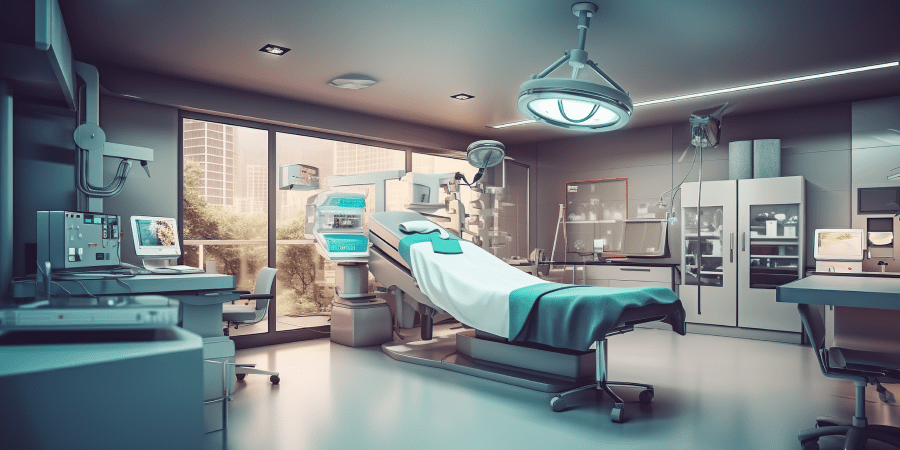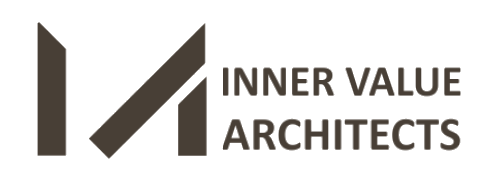In today’s world, we’re all looking for ways to be...
In the dynamic world of healthcare, change is the only constant. Medical centers today face an ever-evolving landscape of patient needs, technological advancements, and shifting care models. This constant flux presents a unique challenge: How can healthcare facilities remain relevant, efficient, and effective in the face of unpredictable future demands? Enter the concept of flexible design, an innovative approach to healthcare architecture that’s revolutionizing how we conceive and construct medical spaces. Flexible design isn’t just about creating aesthetically pleasing environments; it’s about building adaptability into the very fabric of healthcare facilities.
This approach allows medical centers to swiftly respond to new challenges, seamlessly integrate emerging technologies, and efficiently adjust to changing patient demographics and care delivery methods. In this blog post, we’ll explore the critical role of flexible design in modern healthcare architecture. We’ll delve into its key elements, examine its numerous benefits, and showcase real-world examples of this forward-thinking strategy in action. Whether you’re a healthcare administrator, an architect, or simply interested in the future of medical facilities, this exploration will offer valuable insights into creating resilient, future-proof healthcare spaces.
The Importance of Flexible Design in Medical Centers
Flexible design is crucial for several reasons, ensuring that healthcare facilities can adapt to changing needs, technologies, and patient demographics. Here are some key points highlighting its importance:

1. Embracing Technological Advances
Embracing technological advances in any industry, especially in healthcare, is paramount for driving innovation and improving patient outcomes. By incorporating technology for smarter hospital facility design, hospitals can enhance efficiency, accuracy, and accessibility of care. These advances not only streamline administrative tasks and clinical processes but also empower healthcare professionals to deliver personalized treatment plans tailored to individual patient needs. Embracing technological advances not only keeps medical centers at the forefront of healthcare innovation but also fosters a patient-centric approach that prioritizes quality of care and patient safety.
2. Responding to Changing Patient Needs
Healthcare is evolving due to technology, changing demographics, and care models. As populations age, facilities need more patient rooms for maximum comfort and accessibility and geriatric-friendly spaces without major changes. Patient-centered care requires personalized environments for healing and comfort. Chronic diseases mean spaces must switch between acute care and long-term management. Flexible design creates adaptable patient rooms for standard or intensive care, and even family-centered end-of-life care. It supports collaborative areas for complex care coordination. With movable walls and modular furniture, facilities adjust to new care models like preventive and wellness programs.
3. Supporting Operational Efficiency
Flexible design plays a pivotal role in this by optimizing space utilization, reducing wait times, and enhancing workflow dynamics. For instance, strategically placed modular units can accommodate fluctuating patient volumes, ensuring that resources are utilized efficiently without compromising on care quality. Furthermore, incorporating smart technologies and automated systems allows for real-time monitoring of facility operations, facilitating proactive maintenance and timely interventions. These efforts streamline day-to-day operations and contribute to cost savings, ultimately enhancing the overall operational efficiency.
Key Elements of Flexible Design
Flexible design encompasses several key elements that enable spaces to adapt to changing needs and functions over time. Here are the fundamental elements of flexible design:

1. Modularity
Modularity in design means creating spaces or systems with standardized units that can be easily combined or rearranged to meet different needs. In architecture and interior design, modularity offers flexibility and adaptability, allowing spaces to change as requirements evolve. Modular designs use prefabricated components like walls, partitions, and furniture that can be assembled, disassembled, or reconfigured without major construction. This approach maximizes space efficiency and supports sustainability by reducing waste during renovations. In healthcare, modular design optimizes patient care environments, integrates new technologies, and adjusts to fluctuating patient volumes with minimal disruption.
2. Multi-Functionality
Multi-functionality in design refers to the ability of spaces or elements to serve multiple purposes efficiently and effectively. By designing spaces that can adapt to different functions, such as consultation rooms doubling as examination spaces or meeting rooms transforming into training areas, multi-functionality maximizes the utility of every square foot. This approach is particularly beneficial in environments like medical centers where space is at a premium and needs can vary widely throughout the day. Multi-functional designs are not only architectural considerations for modern clinics but also enhance operational flexibility, allowing facilities to respond promptly to changing demands without the need for extensive modifications.
3. Adaptable Infrastructure
Adaptable infrastructure is crucial in ensuring that buildings and facilities can easily accommodate changes in technology, usage patterns, and operational needs. This concept involves designing and implementing flexible systems for electrical, plumbing, HVAC (Heating, Ventilation, and Air Conditioning), and communication networks that can be adjusted or expanded as required. In healthcare settings, adaptable infrastructure supports the integration of advanced medical equipment, telemedicine technologies, and data management systems without the disruption and expense of extensive renovations. By anticipating future technological advancements and operational shifts, adaptable infrastructure enables facilities to maintain high standards of functionality, efficiency, and patient care while remaining responsive to evolving industry standards and regulatory requirements.
4. Movable Fixtures Equipment
Furniture, medical equipment, and fixtures that are easily movable or adjustable play a crucial role in facilitating rapid adaptations to room layouts and functions within healthcare settings. This flexibility enables healthcare providers to swiftly transform spaces to meet varying patient care needs, from converting a consultation room into a temporary treatment area to reconfiguring a recovery room for different patient requirements. By incorporating adjustable elements, such as mobile patient beds, flexible seating arrangements, and modular storage solutions, healthcare facilities can optimize their operational efficiency while maintaining a patient-centric approach.
5. Spatial Efficiency
Spatial efficiency in design focuses on maximizing space use while improving functionality and user experience. Designers plan layouts to ensure healthcare spaces are flexible, practical, and ergonomic. This includes reducing wasted space, optimizing traffic flow, and strategically locating amenities for accessibility and efficiency. For instance, placing patient rooms near nursing stations and diagnostic facilities enhances care coordination and responsiveness. Ergonomic furniture and equipment designs enhance comfort and safety for healthcare professionals and patients. Prioritizing spatial efficiency in healthcare design creates productive, comfortable, and effective care environments.
6. Future-Proofing
Future-proofing healthcare design involves preparing for future needs, trends, and advancements in healthcare. Create inclusive and accessible healthcare space, strategic design decisions to accommodate growth, new technologies, and changes in patient demographics, ensuring longevity in a dynamic industry. This includes creating flexible spaces for new medical procedures and integrating infrastructure for advanced equipment and digital innovations. Considering sustainability and regulations in design enhances facility resilience and adaptability. Future-proofed healthcare environments can meet evolving demands while maintaining high standards of patient care and operational efficiency.
7. Environmental Considerations
Healthcare facilities increasingly integrate environmental considerations into design and operation, focusing on sustainability to minimize ecological impact and enhance longevity. Using sustainable materials, like recycled content and low-emission finishes, conserves resources and reduces carbon footprints. Energy-efficient systems such as LED lighting and smart HVAC controls lower costs, decrease energy use, and cut greenhouse gas emissions. Design strategies like natural daylighting and water-saving fixtures enhance indoor environments and conserve resources. Prioritizing environmental factors in healthcare design supports sustainability goals, improves operational efficiency, and creates healthier spaces for patients, staff, and communities.
Create Flexible Design for Healthcare Space With Inner Value
The future of healthcare architecture depends on flexibility and adaptability. Flexible design isn’t just a trend but a necessity for resilient, efficient, and patient-centered medical facilities. It provides a comprehensive solution to challenges faced by modern healthcare institutions. As healthcare spaces plan for the future, integrating these principles into design and renovation projects is crucial for long-term success and sustainability. Whether building new or updating existing facilities, the benefits of flexible design are clear. To implement these ideas in your healthcare project, it’s important to collaborate with experienced professionals who understand medical environments. For expert guidance, consult Chandigarh architects who specialize in healthcare design to explore how flexible design principles can be applied to your specific needs. Investing in adaptable spaces now ensures healthcare facilities are prepared for evolving patient care, technological advancements, and operational efficiency in the years ahead.










